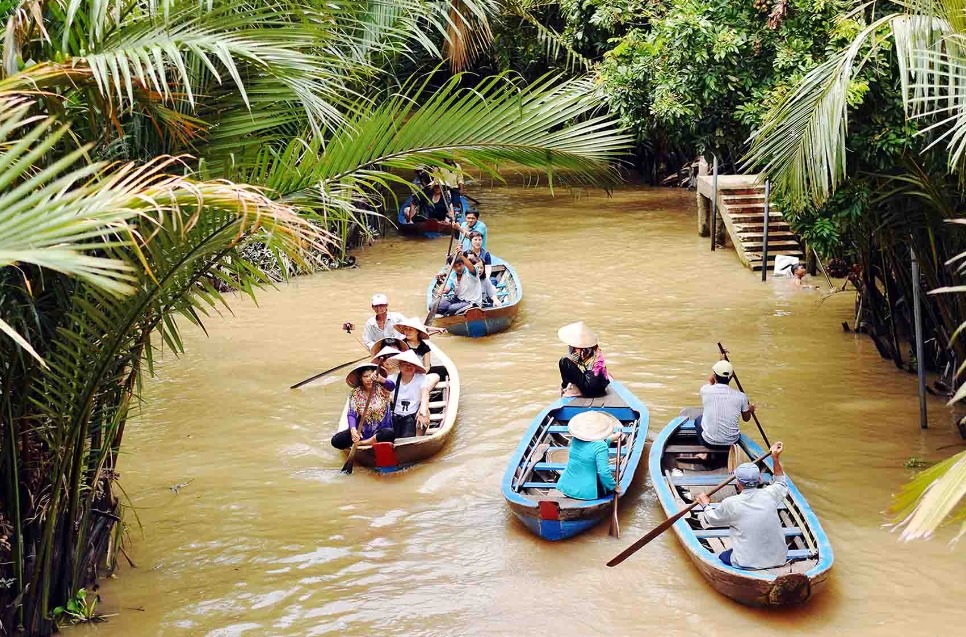Table of Contents
The Cu Chi Tunnels documentary, an intricate network of underground tunnels located in the Cu Chi District of Ho Chi Minh City, Vietnam, stand as a testament to the ingenuity and resilience of the Vietnamese people during the Vietnam War. Stretching over 250 kilometers, these tunnels played a pivotal role in the war, serving as a vital supply route, a strategic military base, and a refuge for soldiers and civilians. This article delves into the rich history, significance, and cultural impact of the Cu Chi Tunnels, uncovering the stories of survival, resistance, and the enduring legacy of this underground labyrinth.
History of Cu Chi Tunnels documentary

The Cu Chi Tunnels documentary have a long and complex history, dating back to the 1940s when they were first built by the Viet Minh during their fight against French colonial rule. However, it was during the Vietnam War that the tunnels gained widespread recognition for their crucial role in the resistance against American forces.
The Origin of Cu Chi Tunnels
The idea of building underground tunnels as a means of defense can be traced back to the ancient times, with examples found in various civilizations such as the Roman Empire and the Chinese dynasties. In Vietnam, the Cu Chi Tunnels were initially built as a way to evade French troops during the First Indochina War. The Viet Minh, led by Ho Chi Minh, used the tunnels to launch surprise attacks on the French and then quickly disappear into the underground network.
During the Vietnam War, the tunnels were expanded and improved upon by the Viet Cong, a communist guerrilla force fighting against the South Vietnamese government and its allies. They were used as a hiding place, a communication and supply route, and a base for launching attacks on American and South Vietnamese forces.
The Construction of Cu Chi Tunnels
The construction of the Cu Chi Tunnels documentary was a remarkable feat, considering the limited resources and tools available to the Vietnamese soldiers. The tunnels were dug entirely by hand using simple tools such as shovels, hoes, and bamboo picks. The soil from the tunnels was then used to create traps and camouflage for the entrances.
The tunnels were built in three levels, with the first level being just a few meters deep and used for storage and living quarters. The second level, at around 8-10 meters deep, served as a communication and supply route, while the third level, at 12-15 meters deep, was reserved for military operations and command centers.
Exploring the Underground World of Cu Chi

Venturing into the Cu Chi Tunnels documentary is like stepping back in time, immersing oneself in the hidden world that served as a sanctuary during the war. Today, visitors can experience a small portion of the tunnels that have been preserved and opened for tourism.
The Tourist Experience
Tourists can choose from various tour packages that offer different levels of exploration of the tunnels. The most popular option is the “short tour,” which includes a visit to the Ben Dinh section of the tunnels, where visitors can crawl through a 100-meter stretch of the tunnels, see hidden chambers, and learn about the life of the Viet Cong soldiers.
For those looking for a more immersive experience, the “long tour” offers a chance to crawl through a longer stretch of the tunnels, try out some of the weapons used during the war, and even sample some of the food that was eaten by the soldiers.
Crawling through the narrow and dark tunnels is not an easy task, even for tourists who are only exploring a small portion of the network. The tunnels were designed to be narrow and low, making it difficult for larger-built individuals to navigate through them. The lack of ventilation and natural light also adds to the challenge, with visitors often feeling claustrophobic and disoriented.
However, these challenges pale in comparison to what the Vietnamese soldiers and civilians had to endure while living and fighting in the tunnels for years. The cramped and dark conditions, along with the constant threat of being discovered by the enemy, took a toll on their physical and mental well-being.
The Significance of Cu Chi Tunnels in Vietnam War

The Cu Chi Tunnels documentary played a crucial role in the Vietnamese resistance against the American forces during the Vietnam War. They were not only a strategic military base but also served as a vital supply route and a refuge for soldiers and civilians.
A Strategic Military Base
The tunnels were strategically located near the Ho Chi Minh Trail, a network of roads and paths used to transport supplies and troops from North Vietnam to South Vietnam. This made the tunnels an ideal location for launching surprise attacks on American and South Vietnamese forces, who were often caught off guard by the Viet Cong’s guerrilla tactics.
The tunnels also served as a base for storing weapons and ammunition, providing a safe haven for the Viet Cong to regroup and plan their next move.
A Vital Supply Route
The tunnels were used to transport supplies such as food, medicine, and weapons from the north to the south. The Viet Cong soldiers would travel through the tunnels at night, carrying heavy loads on their backs, to avoid detection by American planes and ground troops.
The tunnels also had hidden entrances and exits, making it difficult for the enemy to cut off the supply route. This allowed the Viet Cong to continue their fight against the American forces despite facing shortages and blockades.
A Refuge for Soldiers and Civilians
The tunnels were not just used by soldiers; they also provided shelter for civilians, including women and children. Many families were forced to flee their homes due to the constant bombings and attacks, and the tunnels offered a safe place to live and hide.
The tunnels also had hospitals, kitchens, and schools, providing basic necessities for those living underground. This allowed the Vietnamese people to continue their daily lives and resist the American forces despite the harsh conditions.
Uncovering the Truth: A Cu Chi Tunnels Documentary

The Cu Chi Tunnels have been the subject of numerous documentaries, shedding light on the history and significance of this underground network. One such documentary is “Cu Chi Tunnels: Secrets of War,” which was released in 2018 and directed by filmmaker Thomas Burns.
Inside Look at Life in Cu Chi Tunnels
The documentary takes viewers on a journey through the Cu Chi Tunnels documentary, showcasing the challenges faced by the Vietnamese soldiers and civilians who lived and fought in the tunnels. Through interviews with veterans and survivors, the film provides a firsthand account of life inside the tunnels, including the struggles and sacrifices made by those who called it home.
The documentary also features rare archival footage and reenactments, giving viewers a glimpse into the daily activities of the Viet Cong soldiers and the ingenious design of the tunnels.
Cu Chi Tunnels: A Story of Survival and Resistance
“Cu Chi Tunnels: Secrets of War” also highlights the resilience and determination of the Vietnamese people during the war. Despite facing overwhelming odds, they were able to survive and resist the American forces through the use of the tunnels.
The documentary also sheds light on the impact of the war on the local communities, with interviews from civilians who lived near the tunnels and experienced the effects of the conflict firsthand.
The Ingenious Design of Cu Chi Tunnels

The Cu Chi Tunnels are not just a simple network of underground passages; they were designed with great precision and ingenuity to serve multiple purposes.
Camouflage and Traps
The entrances to the tunnels were cleverly disguised to blend in with the surrounding environment, making it difficult for the enemy to locate them. The soil from the tunnels was also used to create traps, such as punji sticks and bamboo spikes, to deter American soldiers from entering the tunnels.
Air Ventilation and Water Supply
To ensure a steady supply of air, the tunnels had multiple ventilation shafts disguised as termite mounds or bomb craters. These shafts also served as emergency exits in case the main entrances were blocked.
The tunnels also had a complex system for collecting and filtering rainwater, providing a reliable source of drinking water for those living underground.
Impact of Cu Chi Tunnels on Vietnamese Culture

The Cu Chi Tunnels have become an important symbol of Vietnamese resilience and resistance against foreign invaders. They hold a significant place in the country’s history and have been recognized as a national historical site by the Vietnamese government.
The tunnels have also become a popular tourist attraction, attracting visitors from all over the world who are interested in learning about the Vietnam War and experiencing a piece of history firsthand.
Behind the Scenes of Filming a Cu Chi Tunnels Documentary

Filming a documentary inside the Cu Chi Tunnels is no easy feat. The cramped and dark conditions make it challenging to capture footage, and the constant presence of tourists can be disruptive to the filming process.
In an interview with director Thomas Burns, he shared some insights into the challenges of filming “Cu Chi Tunnels: Secrets of War.” He mentioned that they had to work around the schedule of the tourist tours, often having to wait for hours to get a clear shot of the tunnels without any visitors in the frame.
He also mentioned the difficulty of capturing audio due to the echoes and background noise in the tunnels. To overcome this, they had to use specialized equipment and conduct interviews in quieter areas of the tunnels.
Preserving the Legacy of Cu Chi Tunnels Through Film

Documentaries such as “Cu Chi Tunnels: Secrets of War” play a crucial role in preserving the legacy of the Cu Chi Tunnels. They provide a platform for veterans and survivors to share their stories and ensure that the sacrifices made by the Vietnamese people during the war are not forgotten.
Through these films, future generations can learn about the history and significance of the Cu Chi Tunnels and understand the impact of the Vietnam War on the country and its people.
Conclusion

The Cu Chi Tunnels documentary stand as a testament to the resilience and ingenuity of the Vietnamese people during the Vietnam War. They played a crucial role in the resistance against American forces and served as a vital supply route and refuge for soldiers and civilians.
Today, the tunnels continue to attract visitors from all over the world, providing a glimpse into the challenging conditions faced by those who lived and fought in this underground network. Through documentaries and other forms of media, the legacy of the Cu Chi Tunnels will continue to live on, ensuring that the sacrifices made by the Vietnamese people during the war are never forgotten.